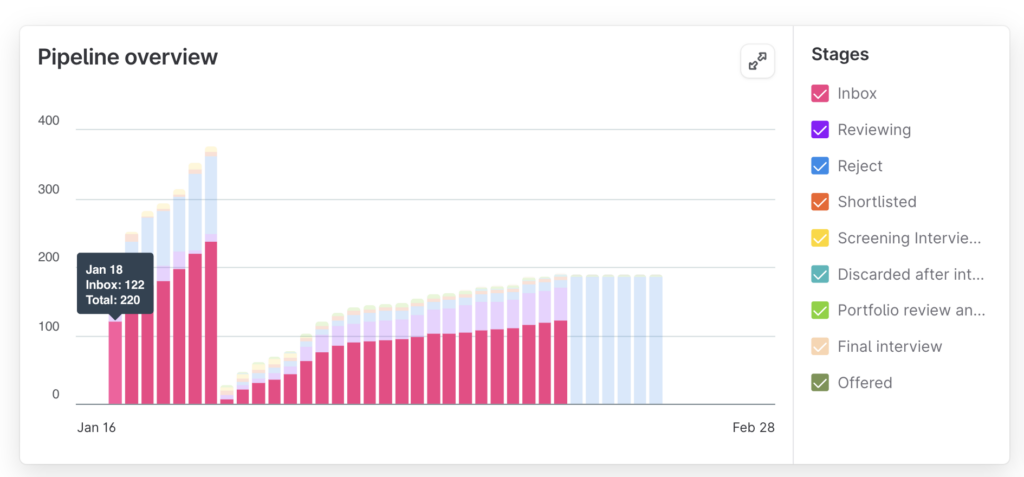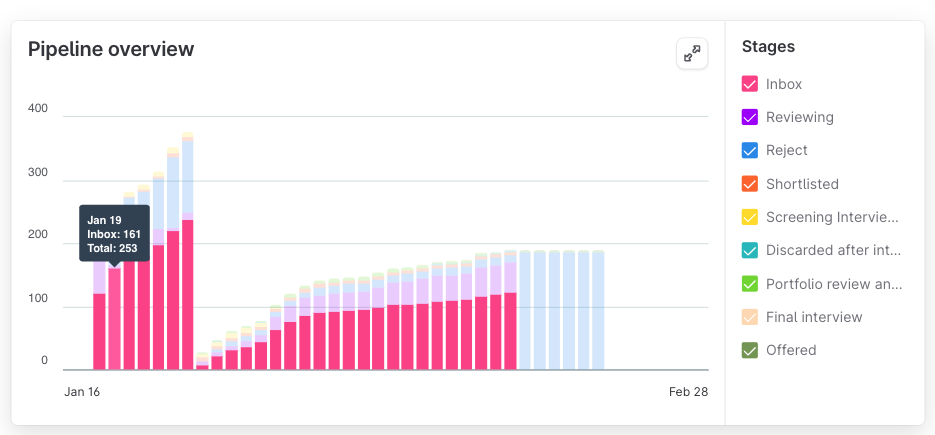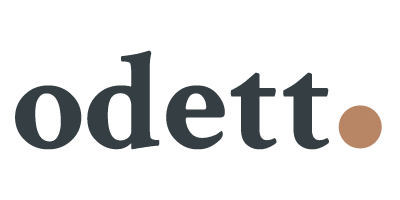Introduction
Two years ago, I joined Nordhealth as the sole UX researcher, tasked with the challenge of building the company’s UX research from scratch. Today, as the Head of UX Research, my journey has shifted from being a one-woman army to leading the charge in expanding our team and integrating research more deeply into our design and development process.
The motivation behind this article is twofold. Firstly, the UX industry, mirroring the broader tech landscape, is in a state of flux. We’re seeing massive layoffs, a lack of junior roles, and a widening gap between junior and senior positions. This has led to an unprecedented number of applicants for every open role. Secondly, as a hiring manager who recently navigated the daunting task of sifting through over 600 applications for a mid-senior UX researcher position, I’ve gained unique insights that I believe are vital for job seekers and companies alike.
The experience was nothing short of overwhelming. With applicants ranging widely in experience and expectations, the process of reviewing portfolios, cover letters, and salary requirements was a massive task. Despite using screening questions to filter candidates based on experience, the sheer volume of qualified applicants was staggering. The challenge was not just in the numbers but in the nuances – from candidates applying well outside our budget to the varied quality of application materials.
In this article, I aim to share a candid, data-driven narrative, peppered with personal anecdotes and visual graphs, to give you a glimpse into what happens on our side of the screen. My goal is to demystify the hiring process, provide practical advice to job seekers, and perhaps, offer a glimmer of hope in these tumultuous times for both applicants and hiring managers.
The hiring process
Crafting the role
With a junior researcher already on board and my recent promotion to Head of UX Research, our team needed someone who could independently drive research projects, mentor junior staff, and navigate the full spectrum of the UX research process. We needed to look for a more senior UX researcher to fill the gap in our team. The role was defined through a collaborative approach, involving discussions with our junior researcher and other stakeholders, such as our product teams and designers, ensuring that the new hire would not only fill a gap but elevate our team to the next level.
Launching the search
We advertised the position across various platforms, including LinkedIn, Indeed, and Glassdoor. Given my active presence and extensive network on LinkedIn, it was a key platform in our recruitment strategy, expected to attract high-quality candidates.
Initial avalanche of applications
The response was immediate and staggering. On the first day, we received 220 applications. To manage this influx, we used Teamtailor, which had been set up with screening questions by our HR team. These questions were crucial in filtering candidates based on experience and alignment with the role, reducing the initial pool to 98 for review. (and this was just day 1!)

Efficient screening and filtering
The screening questions included criteria such as location, years of UX research experience, expertise in qualitative and quantitative research, independent research activities, salary expectations, and portfolio submission. These questions effectively narrowed down the candidates, making the review process more manageable. On day one that excluded 122 people from reviewing process but still with 98 people to review after 1 day of the job being online, it became clear this was going to be quite the task.
Day 2: A closer look
By the second day, the total applications had risen to 284, with 161 not passing the screening questions. I had shortlisted 3 candidates and rejected 72, primarily due to geographical mismatch or unrealistic salary expectations. The time spent reviewing each application was significant, yet necessary to ensure a fair and thorough process.
Challenges Along the Way
The most frustrating aspect was encountering applicants who either misrepresented their experience or applied despite being outside our specified hiring region. This not only wasted valuable time but also raised questions about the effectiveness of our communication in the job description (we mentioned Europe 3 times, how did people miss this?). Additionally, the sheer volume of applications was overwhelming, challenging my commitment to give each candidate a fair amount of time and evaluation.


Teamtailor: A Valuable Tool
Teamtailor proved invaluable in this process. Its filtering capabilities allowed us to quickly identify suitable candidates. The platform’s rating system and the ability to share candidates with my team for feedback streamlined the decision-making process, ensuring a collaborative approach to selecting candidates for the next stage. But really, wouldn’t it be all the more useful to have a recruiter do this work for me? Especially in this market?
Common missteps by applicants
🌎 Geographical mismatch and reading the job description
A significant number of applicants, from regions as varied as the USA, Canada, India, and Argentina, applied for a role explicitly stated for someone based in Europe within an hour of the CET time zone. This raised a critical concern: Did these applicants thoroughly read the job description? As a UX researcher, critical assessment and attention to detail are key skills. Applying for a role clearly outside one’s geographical eligibility not only wastes time for both parties but also casts doubt on the applicant’s thoroughness and critical reading skills.
🎓 Misrepresentation of experience
It was disheartening to encounter candidates, some still in university, claiming to have 4-6 years of industry experience. Honesty in the screening process is crucial. Misrepresenting experience not only leads to immediate disqualification but also consumes valuable time that could be spent on genuine candidates. It’s important for applicants to understand that even if they don’t meet the exact years of experience, their skills and potential could still make them valuable candidates, but not when they are dishonest about that experience.
💰 Salary expectations and transparency
The lack of transparency in salary expectations was a two-fold challenge. While I appreciate candidates who specified their salary range, as it helped in quickly assessing budget alignment, those who were vague or non-committal often faced automatic rejection due to the sheer volume of applications. It’s a regrettable situation where talented individuals might be overlooked due to budget constraints, highlighting the need for more openness about salary ranges in job postings.


But it also goes the other way where I believe it’s important to know your worth. Candidates applying with a salary expectation of ‘not sure’ are shooting themselves in the foot. Do some research, know your worth and apply with what you think you should earn.

Now as much as I agree that companies should put the salary range in the job description, we were told we couldn’t do this. So for those of you contemplating if it’s worth applying, contact the hiring manager about the budget range if you’d like to know if applying is worth your time.
🌅 Portfolio submission and quality
A surprising number of applicants did not include a portfolio, despite its explicit request in the job description. A well-crafted portfolio is more than a showcase of past projects; it reflects an applicant’s ability to document and narrate their research process. The quality of portfolios varied significantly, from unclear presentations to exemplary case studies, demonstrating the diverse approaches to documenting UX research.
✉️ Cover letters: brevity vs. absence
The cover letter dilemma ranged from overly lengthy submissions to complete omissions. While a brief, insightful cover letter can provide valuable context about an applicant’s motivation, excessively long ones are impractical given the volume of applications. Conversely, the absence of a cover letter can sometimes be perceived as a lack of effort or interest. The key is finding a balance that conveys interest and fit without overwhelming the hiring manager. After all, the goal here is to land that first call. Personally I don’t care for cover letters as I think the portfolio speaks volumes about a candidates skills. And in my experience, almost all cover letters say the same thing. But my opinion on this might not be the same as that of another hiring manager.
🇪🇸 Language barriers in resumes and portfolios
Receiving resumes and portfolios in languages other than English posed a significant barrier. For a role in an international company where English is the working language, it’s essential for applicants to ensure their documents are in English. This not only facilitates the review process but also demonstrates an understanding of the company’s working culture. While I would love to be able to read (for example) Spanish, I don’t suppose your resume is talking about ordering wine and tapas (because thats about as far as my Spanish skills reach).
Conclusion
I think I can write way more about this experience and topic alone, but for the sake of readability, let’s wrap it up here with some key lessons that can benefit both job seekers and hiring teams. The sheer volume of applications and the intensity of the screening process reflect the competitive nature of the job market, particularly in specialized fields like UX research. Here are some final insights and suggestions to help refine both the application and hiring processes:
For Job Seekers:
- Attention to Detail: Make sure to read the job description thoroughly. Applying for a position you are clearly unqualified for or geographically ineligible for can reflect poorly on your attention to detail and critical thinking skills.
- Transparency and Honesty: Be upfront about your experience and salary expectations. Misrepresentation can lead to immediate disqualification and undermines your credibility as a potential candidate.
- Portfolio Quality: Invest time in crafting a high-quality portfolio that effectively communicates your skills and process. This is often your first impression and a crucial tool to differentiate yourself from other candidates.
- Brevity and Precision: When including a cover letter, keep it concise and relevant. It should complement your application without overshadowing the important elements like your resume and portfolio.
For Hiring Managers:
- Streamlined Screening: Continue to refine screening questions and criteria to manage large volumes of applicants more efficiently. Tools like Teamtailor are invaluable, but combining them with human oversight ensures that no potential candidate is overlooked due to systemic limitations.
- Salary Transparency: Where possible, aim for transparency regarding salary expectations. This could be through direct communication if policy prevents public disclosure. Clear communication can save time for both parties and aid in quicker decision-making.
- Cultural and Language Considerations: Be mindful of the international nature of many applicants and the need for clarity in language requirements. Ensuring all communications and job postings are in the working language sets clear expectations.
- Feedback and Engagement: Offering constructive feedback, even in rejection emails, can enhance your company’s reputation and provide valuable insights to candidates for future applications.
Looking Ahead:
We’re in the midst of a big change in UX, with talks about centralisation, democratisation, becoming generalists vs experts, the involvement of AI and the last will not have been said about any of these topics when it comes to our field.
I believe it’s up to us, especially those of us in leadership roles, to nurture an environment where fair hiring isn’t just a guideline, but a core part of our ethos. It’s about opening up more conversations around the real challenges and intricacies of hiring. This helps us all—companies and candidates alike—strive towards more transparent, inclusive, and effective hiring practices. And for everyone in the field to find the right place of work and the right hire.
Staying adaptable, empathetic, and committed to improvement is key, whether you’re reviewing hundreds of applications or crafting your own for submission. After all, the end goal is to ensure a good fit for both the individual and the company.



